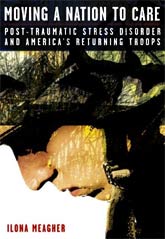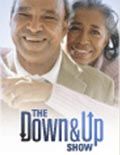LinkBlog
Crying Shame - a Priory Group survey about stigma and mental illness in Britain (pdf)
6 Golden Rules for Conquering Performance Anxiety by David Leisner
Freedom from Fear's On Target Summer/Fall 2007 newsletter - an anxiety & depression resource (PDF)
Switching between monoamine oxidase inhibitors (MAOIs) and SSRI or tricyclic antidepressants (.doc format)
Study sheds new light on the placebo effect

Why do some people experience a "placebo effect" that makes them feel better when they receive a sham treatment they believe to be real - while other people don't respond at all to the same thing, or even feel worse?
A new study from the University of Michigan (U-M) Health System may help explain why.
The U-M research team pinpointed a brain region central to the machinery of the placebo effect—the often controversial phenomenon in which a person’s belief in the efficacy of a treatment such as a painkilling drug influences its effect.
Using two different types of brain scans, they found that the extent to which a person responds to a placebo treatment is closely linked to how active a certain area of their brain becomes when they're anticipating something beneficial.
Specifically, the research finds strong links between an individual's response to a placebo "painkiller", and the activity of the neurotransmitter known as dopamine in the area of the brain known as the nucleus accumbens. That's a small region at the center of the brain that's involved in our ability to experience pleasure and reward, and even to become addicted to the "high" caused by illicit drugs.
The new research, published in the July 19 issue of the journal Neuron, builds on research previously published by the same research team in 2005. That study was the first to show that just thinking a placebo "medicine" will relieve pain is enough to prompt the brain to release its own natural painkillers, called endorphins, and that this corresponds with a reduction in how much pain a person feels.
"Receptors for both endorphins and dopamine are clustered heavily in the nucleus accumbens. So, taken together, our studies delve directly into the mechanisms that underlie the placebo effect," says senior author and U-M neuroscientist, psychiatrist and brain-imaging specialist Jon-Kar Zubieta, M.D., Ph.D. "This is a phenomenon that has great importance for how new therapies are studied, because many patients respond just as well to placebo as they do to an active treatment. Our results also suggest that placebo response may be part of a larger brain-resiliency mechanism."
For the current study, Zubieta and his colleagues - led by neuroscience graduate student David J. Scott - combined information from two types of brain scan to come to their conclusions. They performed PET (positron emission tomography) scans on the brains of 14 healthy volunteers, and fMRI (functional magnetic resonance imaging) scans on those 14, and on 16 other healthy volunteers.
The PET scans focused on brain dopamine, looking at its activity as volunteers were told to expect, and then received, a painful injection of saline solution in their jaw muscle. They were then told to expect, and then received, an injection that they were told could either be a painkiller or a placebo. (Both were in fact placebos.) The fMRI scans looked at volunteers' brains while they played a game. Before each round, they learned that a correct answer would win or lose an amount of money, up to $5.
The PET scans were made using 11C-raclopride, which combines a drug that binds preferentially to dopamine receptors with a short-lived radioactive form of carbon that can be "seen" on PET scans. Throughout the PET scanning session, volunteers were asked to rate their level of pain on a numerical scale, and to describe any emotions they were experiencing.
Before the painful injection began, but after the volunteers had been told it was coming, they were also asked to guess how much pain relief they'd get from the "painkiller" if they received it. Half the volunteers were women, all in the same stage of their monthly cycle to avoid differences in hormonal state that might affect tolerance of pain - another topic that Zubieta's team has studied.
The PET scans and pain ratings revealed that as a group, the volunteers experienced significant pain relief from the placebo. But when researchers looked at each individual's results, they found that only half of the volunteers reported less pain when they received the "painkiller" placebo.
These placebo responders, as they were dubbed, had significantly more dopamine activity in their left nucleus accumbens than the other volunteers, beginning when they were told the painkiller medicine was about to begin flowing into their jaws. It also turned out that these individuals had also all anticipated the "painkiller" would give good pain relief before they even received it.
Meanwhile, of the seven individuals who didn't experience the placebo effect, four actually reported feeling more pain when the "painkiller" was delivered - a phenomenon that has been dubbed the "nocebo" effect and has been observed in other situations.
Just to make sure that the volunteers' pain ratings weren't affected by the fact that they always received painful injections followed by placebo "painkiller", the researchers put a separate group of 18 male volunteers through the same experience twice, but no placebo was actually given, and actual PET scans were not done. Their pain and emotion ratings were significantly different from those of volunteers who received placebo.
"The results of these functional molecular imaging studies indicate that dopamine activity is activated in response to a placebo in a manner that's proportional to the amount of benefit that the individual anticipates," says Zubieta, who is the Phil F. Jenkins Professor of Depression in the U-M Medical School's Department of Psychiatry and a member of U-M's Molecular and Behavioral Neuroscience Institute, Depression Center and Department of Radiology.
The fMRI scans, which were performed on different days from the PET scans, revealed additional information about how individual expectations correlated with their placebo response. Each volunteer had an fMRI scan that looked at blood oxygenation throughout their brain, which allows researchers to spot areas where neurons (brain cells) are especially active as the individual performs a task or plays a game. In this case, the task was a very simple gambling game, in which subjects were scanned while expecting varying levels of a monetary reward or no reward.
As in the PET scans, the nucleus accumbens was a hotbed of activity as the volunteers were told how much money they could win or lose in the next round; as they waited for the round; and as they pressed the button and learned if they had succeeded in winning or avoiding losing money.
The researchers believe that "These findings are consistent with the hypothesis that this system is involved in the encoding of the 'incentive value' of the placebo, possibly acting as a gate or permissive system for the formation of placebo effects."
Then, the researchers compared the PET and fMRI scans for the volunteers who had had both types of scan. They also compared the ratings of anticipated placebo effect, the analgesia induced by the placebo during the pain studies, and the emotional changes associated with it. They found that those who expected a placebo to help them and got greater benefit from it (more analgesia, better emotional state) were also those who had the most activity in their nucleus accumbens during the anticipation of receiving a reward in the fMRI money game.
They conclude that “The placebo effect then emerges as a resiliency mechanism with broad implications that, given its activation of specific circuits and mechanisms, can be both examined and modulated for therapeutic purposes.”
Scott DJ, Stohler CS, Egnatuk CM, et al. Individual Differences in Reward Responding Explain Placebo-Induced Expectations and Effects Neuron 2007;55(2):325-336 [Summary]















